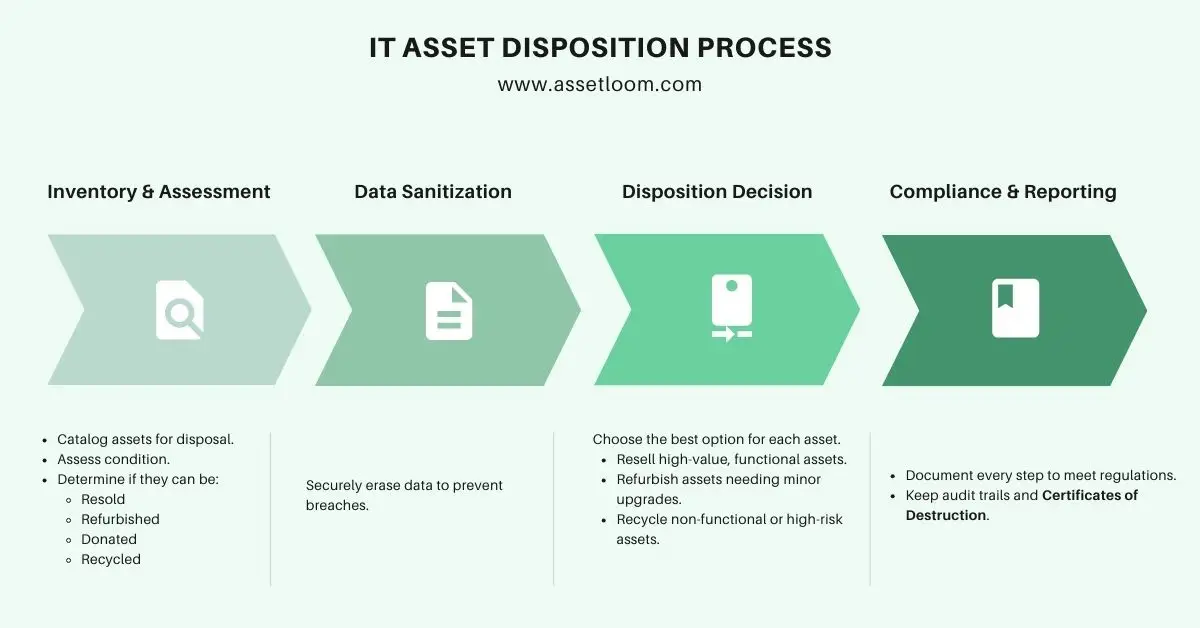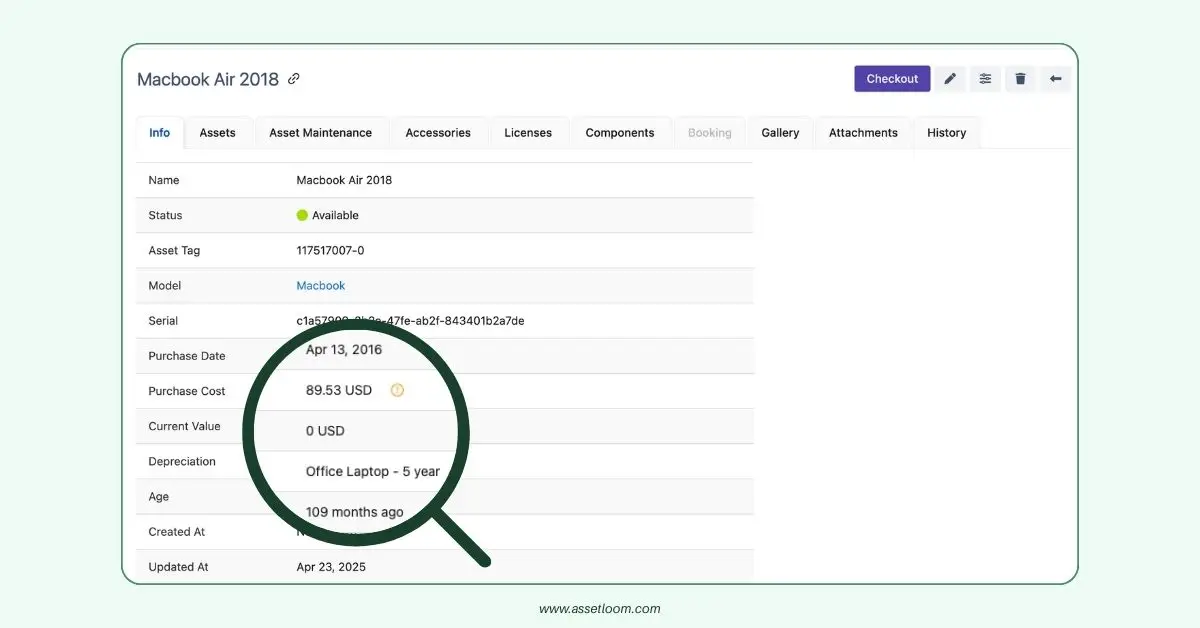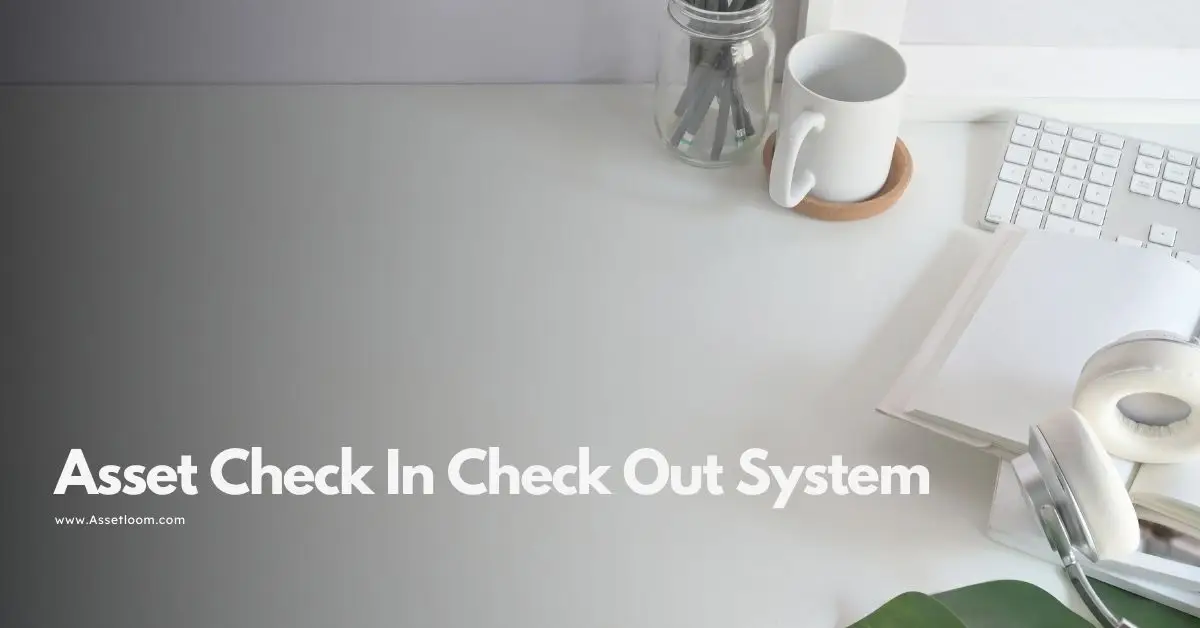Understanding IT Asset Disposition (ITAD) in IT Asset Management Lifecycle
IT asset disposition is the final step of IT asset lifecycle management, which helps businesses dispose of their IT assets safely.
Every IT asset has a life. It powers your operations, stores data, or connects teams. But eventually, laptops, servers, or software licenses become obsolete. When that happens, they need a thoughtful send-off. That’s where IT Asset Disposition (ITAD) steps in.
TL;DR: IT Asset Disposition (ITAD) securely retires old IT assets, protecting data, ensuring compliance, reducing environmental harm, and recovering value.
As the final stage of the IT Asset Management (ITAM) lifecycle, IT Asset Disposition (ITAD) ensures that assets like computers, servers, and cloud subscriptions are disposed of responsibly. By "responsibly," we mean disposing of IT assets while protecting sensitive data, ensuring regulatory compliance, minimizing environmental impact, and recovering financial value. Done right, ITAD can prevent costly data breaches, protect your brand reputation, and align with your sustainability goals.
Learn what IT Asset Lifecycle Management is.
But how to do it right? Let’s first dive into what IT asset disposition is, why it matters, then we will figure out what to do.
What is IT Asset Disposition (ITAD)?
IT asset disposition (ITAD) is the process of retiring IT assets when they’re no longer needed. These assets include physical hardware like desktops, laptops, servers, routers, and hard drives, as well as intangible assets like software licenses or cloud subscriptions.
Imagine your company upgrades its laptops. The old ones, still functional, contain sensitive customer data. ITAD ensures these devices are inventoried, wiped clean using NIST-compliant methods, and either resold to recover value or recycled responsibly, all while keeping detailed records for compliance.
In case you haven’t heard this, NIST-compliant means an organization follows the cybersecurity standards and guidelines established by the National Institute of Standards and Technology (NIST), a US government agency.
The IT asset disposition process typically includes the following steps:
- Inventory and Assessment: Catalog assets for disposal. Track serial numbers and assess condition. Determine if they can be resold, refurbished, donated, or recycled.
- Data Sanitization: Securely erase or destroy data to prevent breaches. Use methods like cryptographic erasure, degaussing, or physical shredding.
- Disposition Decision: Choose the best option for each asset, whether to resell or refurbish high-value items. Recycle outdated or broken equipment.
- Compliance and Reporting: Document every step to meet regulations (GDPR, HIPAA, or e-waste laws). Keep audit trails and Certificates of Destruction.

Why IT Asset Disposition Matters?
IT asset disposition isn’t just about clearing out old equipment, it’s a strategic necessity that protects your business and the planet (we mean it). Here’s why it’s worth your attention:
It Keeps Your Data Safe
One un-wiped laptop can spark a data breach. In 2024, breaches from improper disposal cost $4.88 million on average, per IBM’s Cost of a Data Breach Report. ITAD ensures sensitive data is erased securely. Methods like cryptographic erasure or shredding meet NIST 800-88 standards. This protects customer information and your business from costly fallout.
It Ensures Regulatory Compliance
Data protection laws are strict. GDPR, HIPAA, and CCPA demand secure data handling. E-waste regulations, like the EPA’s RCRA, govern disposal. Non-compliance risks fines or legal trouble. IT asset disposition provides documented processes to meet these rules. Certificates of Destruction prove you’re covered.
It Protects the Planet
E-waste is a global crisis. In 2022, 59.1 million tons were generated, per the Global E-waste Monitor. Only 17% was recycled properly. Devices contain toxins like lead, up to 4 pounds in a CRT monitor. Improper disposal pollutes soil and water. ITAD ensures assets are recycled responsibly at R2 or e-Stewards certified facilities. Recycling recovers valuable materials like gold and copper. This reduces mining and supports a circular economy. Plus, it aligns with your ESG goals, showing stakeholders you care about sustainability.
It Saves (or Makes) Money
Gartner predicted that global IT spending will hit $5.61 trillion in 2025, a 9.8% rise from 2024. This forecast shows the massive value of IT assets, underscoring the need for proper IT asset disposition (ITAD) to recover funds through resale, donation, or responsible recycling.

The 9.8% growth also reflects global IT market expansion, including in regions with developing economies. These areas often rely on secondary markets for affordable IT solutions, boosting resale demand. Maybe you didn’t know, refurbished laptops or servers retain 20–30% of their cost. Reselling them offsets disposal expenses, while donating usable tech to nonprofits earns tax benefits. In the end, ITAD turns assets into cash while cutting waste.
It Boosts Your Reputation
A little bit practical for this point, but you know, customers and partners value security and sustainability. A strong ITAD program proves you’re responsible. It shows you protect data and prioritize the environment. This builds trust and strengthens your brand in an eco-conscious market.
How to Do ITAD Right?
To build an effective IT asset disposition program, you need a structured approach that integrates security, compliance, sustainability, and value recovery. Build IT asset disposition on ITAM’s foundation: asset tracking, security policies, and compliance, from acquisition to disposal. Here’s how to do ITAD right with detailed steps rooted in ITAM:
Develop a Comprehensive ITAD Policy
Create a clear, documented policy outlining how assets are retired, who’s responsible, and what standards apply. Align it with your organization’s data security, compliance, and sustainability goals. For example, mandate NIST-compliant data sanitization for all devices before disposal.
Track and Document Everything
Maintain detailed records for each asset, including serial numbers, condition, disposal method, and destination. This data is vital for audits and proving compliance with regulations.
Pro tip: Use ITAM software to streamline tracking and generate reports.
Evaluate the Assets Carefully
The most important step lies in how you assess your IT assets. Careful value assessment is key. You need to pull data from ITAM’s asset inventory to list devices for disposal, reviewing serial numbers, age, and specs. Assess condition, functionality, and market value.
Many ITAM tools nowadays support the full IT asset management cycle, including IT asset disposition. For example, AssetLoom automatically calculates asset value over time using the straight-line depreciation method. It tracks your asset’s current value since purchase, helping you decide whether to resell, refurbish, donate, or recycle.

AssetLoom Depreciation function for IT asset disposition process
Pro tip: Resell high-value, functional assets (e.g., servers retaining 20–30% cost). Refurbish assets needing minor upgrades (e.g., RAM). Donate functional, low-demand tech to nonprofits for tax benefits. Recycle non-functional or high-risk assets via R2 vendors to avoid e-waste toxins like lead. Consult ITAD vendors for market insights. ITAM’s data ensures no asset is wasted.
Prioritize Data Security
Data breaches from improperly disposed of assets are preventable. Use certified data destruction methods, such as software-based wiping for reusable devices or physical destruction for non-functional ones. Always obtain Certificates of Destruction from your ITAD vendor to document compliance. For high-security environments, consider on-site data destruction to maintain control.
Educate Your Team
Employees are often the weakest link in IT asset disposition. Train staff on the importance of proper disposal and the risks of unauthorized actions, like throwing old devices in the trash. Make ITAD policies accessible and integrate them into onboarding programs.
To Sum Up
If you’re reading this, you now know how to handle old laptops, servers, or software licenses. Don’t just toss them! Use IT Asset Disposition (ITAD) to turn outdated tech into value as a part of managing hardware and software assets. ITAD protects your sensitive data, keeping you compliant with GDPR and HIPAA and avoiding fines. And lastly, small actions like recycling at R2-certified facilities stop e-waste toxins, making a big impact on the journey to protect the environment.

Subscribe for Expert Tips and Updates
Receive the latest news from AssetLoom. right in your inbox


